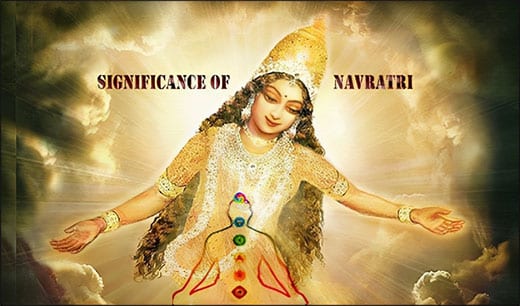Exploring the Scientific Significance of Navratri: Unveiling the Mysteries Behind the Celebration
Abstract
Humans have different paths and religions to follow in today’s worlds. With evolution, beliefs and religions have also evolved. But SANATAN is believed to be the oldest way of living and an auspicious path towards Moksha. Sanatan Sanskriti is more than religion or culture. In Fact it was never defined as a religion, moreover it is a way of living and path towards salvation. SATYA SANATAN SANSKRITI have evolved a lot in vedic era. The relation between belief and science is very deep and meaningful. Around 1000 BC – 1100 BC temples and Indian science were fully organized and developed. Vedic era was the age of science and knowledge. In every field medical science, astronautical science, mathematics, metallurgy, botany , every part of science was developing. VEDIC KAAL is considered from 1500 BC to 600 BC. Even our religion and hindu scriptures are written and stored in that era , and everything was scientific and related to the universe in depth. SANATAN SANSKRITI believes in EKTA VAAD that is uniformity. Means living beings humans and universe are interconnected and same. Our religious beliefs (adhyatm) and customs are also related to the universe (vastu).

Introduction
NAVRATRI – Literally Means Nine Nights.
It is a term used for the nine days and nights. But its importance and significance is deep in astral science. Position of earth sun stars have an important role on living beings on earth , as shifts of energy take place with change in position of stars , sun and astral planes. In one year four different navratri are celebrated in different seasons or you can say in between two ritus. Their time and position of earth is the main reason for NAVRATRIS. As various changes occur at 4 different points of year . Seasonal changes, temperature changes, environmental changes, human physiological changes.
Important Events And Knowledge
- Equinox
- Four Different Navratris
- Seasonal Changes And Environmental Changes
- Spiritual Changes
- Nine Chakra Awakening
- Five Practices
- Fasting And Medical Importance
Description
1. Equinox
- Equinox is a Greek term for equal day-night.
- It happens twice a year.
- In the month of march – In the month of september.
2. Four Different Navratris
- VASANT – March and April.
- ASHAD – (Shukla Paksha) June – July.
- SHARAD (Prati pada first day) – Oct – Nov.
- PAUSH – Dec-Jan
3. Seasonal Changes
Ritu sandhi (Transition phase) Navratri is celebrated in four different times of year. And many environmental changes can be seen during this period. For example in
- March and April greenery can be felt everywhere and it is the best time for vaman.
- In the month of June-July flowers and fruits can be seen everywhere and the rainy season arrives.
- In the month of Oct-Nov it is time for leaf fall and there is dryness in the environment and no greenery.
- In the month of Dec-Jan it’s winter outside. Cold temperature and dryness in the environment.
4. Spiritual Changes
It is believed that due to the change in position of earth, sun, moon, stars there is a change of energy inside our (brain) minds. Those changes are minute and can’t be observed by majority, but our science believes that astral and star position in relation to our birth month (event) plays an important role on our health and spirituality.
5. Chakra Awakening
Nine Chakras According To Ayurveda
- Bhumi chakra
- Muladhar chakra
- Swadhishtan chakra
- Manipur chakra
- Anahat chakra
- Vishudhi chakra
- Agya chakra
- Sahsrar chakra
- Akash chakra
It is believed our chakras which are the energy points are surrounded by two serpents in form of IDA and PINGLA, and the energies rise from base chakra upwards depending on our lifestyle, devotion and different practices , also our intellect and emotional qualities also plays important role in chakra awakening. Particularly in this phase if one stores energy and practices good deeds, mantras, sadhna can move further in the chakra journey . devotion towards the universe and god also help in the chakra awakening.
6. Five Practices
One Should Do These Five Practices
- Prayer (Devi pujan)
- Meditation, Mantra (Dhyan and sadhna)
- Daan punya (Charity)
- Fasting ( Detoxification of body)
- Devotion towards nature (Plantation, Animal feeding (Gaupuja )
7. Fasting And Medical Importance
Fasting is an act of devotion in all religions and cultures, and it has a scientific and medical significance and role in health. Fasting is a therapy to our body by which we can detoxify the body and organs . It is like a break to our digestive system . which helps in balancing of enzymes and other phenomena. Fasting – Detoxification.
Conclusion
This article conclude that our Adhyatam gyan (religious knowledge) is totally scientific and our beliefs are interconnected with scientific and physiological changes, it was submerged in religious practices so that knowledge can be spread easily to everyone, as these rituals are now part of our daily routine and practices so it is innate in us . This article provides knowledge about NAVRATRI , the names of Goddess with respective mantras, the significance and changes taking place in the universe. You can also start detoxification of your body by practicing these habits and fasting.



